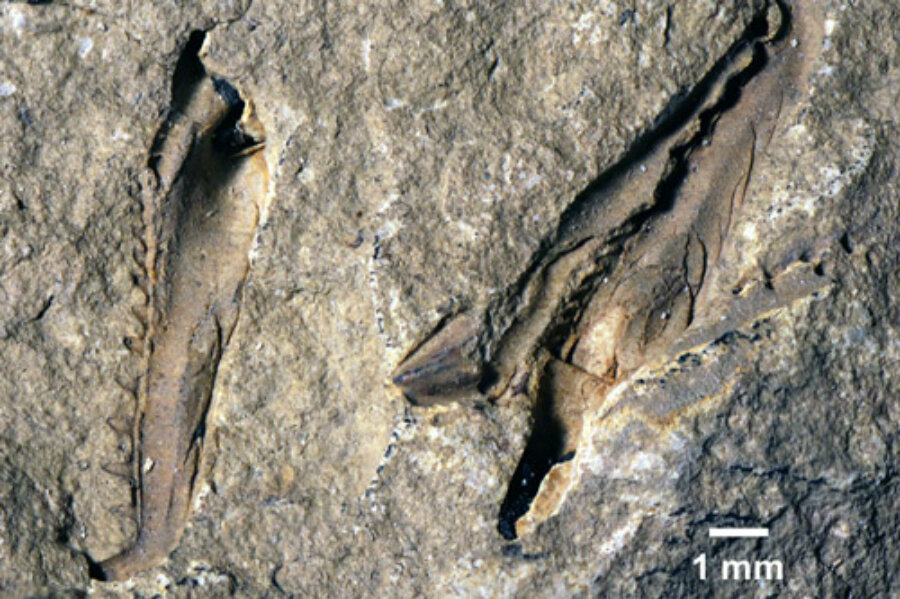Why did this ancient worm have such huge jaws?
In 1994, Canadian scientist Derek Armstrong helicoptered into a remote corner of northern Ontario to collect fossils. The specimens he gathered that day, which sat in storage at the Royal Ontario Museum for more than two decades, have just helped scientists identify a new species of ancient marine worm.
"This is an excellent example of the importance of looking in remote and unexplored areas," said David Rudkin, assistant curator at the Royal Ontario Museum, and "scrutinizing museum collections for overlooked gems."
In these 400-million-year-old rocks, researchers from the Royal Ontario Museum, the University of Bristol, and Sweden’s Lund University found jaws from the class Polychaeta, the marine relatives of earthworms.
Most Polychaeta worms have tiny jaws, ranging in size between 0.1 millimeters (the width of a human hair) and 2 millimeters (the thickness of a nickel).
These measured almost half an inch.
Based on this startling size difference, and other structural features of the jaw, the scientists concluded that they had found a new species, which they dubbed Websterprion armstrongi, which they calculated must have measured more than 3 feet long. They wrote up their findings in a report published in Nature.
Their finding indicates that "polychaete gigantism was already a phenomenon in the Palaeozoic, some 400 million years ago," they wrote.
The researchers likened W. armstrongi to some living members of the family Eunicidae, which can grow 10 to 20 feet in length though only 1 inch wide.
If armstrongi was anything like these modern cousins, it would have been a monster to most of its contemporaries, 385 and 397 million years ago.
The modern Eunice aphroditois, which hides under seafloor sands before bursting up and snapping up fish with its five spring-loaded jaws, “appears like a frightening apparition from a science fiction movie," wrote researchers in 1996, who said they saw it attack a filefish more than a foot long. "When the filefish ventured too close to the worm, it emerged slightly from its burrow and seized the fish in its jaws with lightning speed.”
Their ancient ancestors may have shared both the modern worms' large size and surprise hunting strategy, which would have given them an undeniable evolutionary edge. “Gigantism in animals is an alluring and ecologically important trait, usually associated with advantages and competitive dominance,” explained the study’s lead author, Lund University Professor Mats Eriksson.
He thinks this finding could deepen our understanding of how gigantism arose in the ancient aquatic environment of what is today Ontario. “It is ... a poorly understood phenomenon among marine worms and has never before been demonstrated in a fossil species.”







